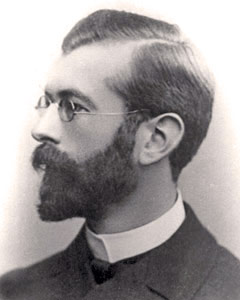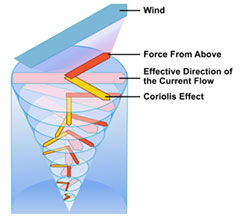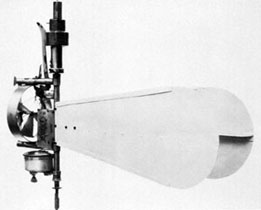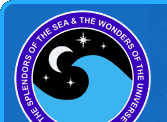
Vagn Ekman
1874 - 1954
Swedish oceanographer who developed a number of theories to explain the dynamics of ocean currents.
Developed a formula for determining the compressibility of seawater as a function of pressure and temperature.
Inventor of several scientific instruments for oceanography, some of which are still in use today.
Vagn Walfrid Ekman was a Swedish oceanographer. He was born on May 3, 1874 in Stockholm, Sweden. His father was an oceanographer, and he grew up with an interest in the ocean. He attended secondary school in Stockholm, after which he studied at the University of Uppsala. He majored in physics, but after attending lectures on hydrodynamics in 1897, his interest in that field was peaked. Ekman made several contributions to oceanography while still attending the university. The famous polar expedition by Fridtjof Nansen discovered that ice tended not to follow the direction of the wind, but drifted at a slight angle of 20 to 40 degrees to the right, away from the wind. Ekman studied the problem and published a report in 1905. Titled On the Influence of the of the Earth's Rotation on Ocean-Currents, it described the balance of friction between the wind, the sea surface, the layers of water, and the force of the Earth's rotation (known as the Coriolis force). He referred to these phenomena as the Ekman spiral and the Ekman transport.

Ekman graduated from the University of Uppsala in 1902 and joined the staff of the International Laboratory for Oceanographic Research in Oslo, Norway. He worked there for seven years, and his research led to a number of inventions for use in oceanography. These included the Ekman current meter and the Ekman reversing water bottle, both of which are still used today. His continued research also revealed the cause of dead water, a phenomenon in which a thin layer of fresh water from melting ice spreads over the sea, causing slow-moving boats to become stuck. Ekman concluded that dead water results from waves that are formed between water layers of different densities. His research also produced a formula for the mean compressibility of seawater as a function of pressure and temperature. This formula is still used today to determine the density of seawater that has been compressed by hydrostatic pressure.

After completing his work in Oslo, Ekman moved to Lund, Sweden. In 1910 he became professor of mechanics and mathematical physics at the University of Lund. He continued his theoretical and experimental work, publishing theories on wind-driven ocean currents and the dynamics of the Gulf Stream. He also worked on trying to solve the mystery of ocean turbulence, with only partial success. He continued to refine his techniques for measuring ocean currents. In 1935 he was elected as a member of the Royal Swedish Academy of Sciences. He was a gifted singer, pianist, and composer, and he continued to study ocean currents until his death on March 9, 1954 in Gostad, near Stockaryd, Sweden. Many terms used today in oceanography have been named after Ekman, and his research has contributed a great deal to our understanding of how the ocean works.




